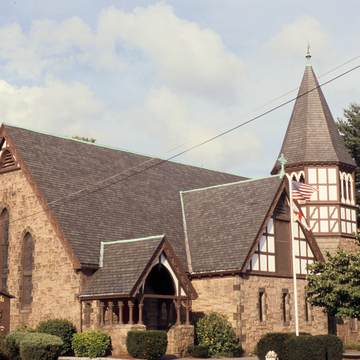Until 1886 Charles Brigham had been in partnership with John Hubbard Sturgis, the English-trained architect with whom he designed the first Museum of Fine Arts in Boston and the Church of the Advent (BH46) on Beacon Hill. Trinity Episcopal Church is an important work by Brigham alone, just after the end of the partnership. For the body of the Melrose church, he used a quarry-faced ashlar granite from Gloucester with window and
You are here
Trinity Episcopal Church
1886–1887, Charles Brigham. 131 W. Emerson St.
If SAH Archipedia has been useful to you, please consider supporting it.
SAH Archipedia tells the story of the United States through its buildings, landscapes, and cities. This freely available resource empowers the public with authoritative knowledge that deepens their understanding and appreciation of the built environment. But the Society of Architectural Historians, which created SAH Archipedia with University of Virginia Press, needs your support to maintain the high-caliber research, writing, photography, cartography, editing, design, and programming that make SAH Archipedia a trusted online resource available to all who value the history of place, heritage tourism, and learning.


